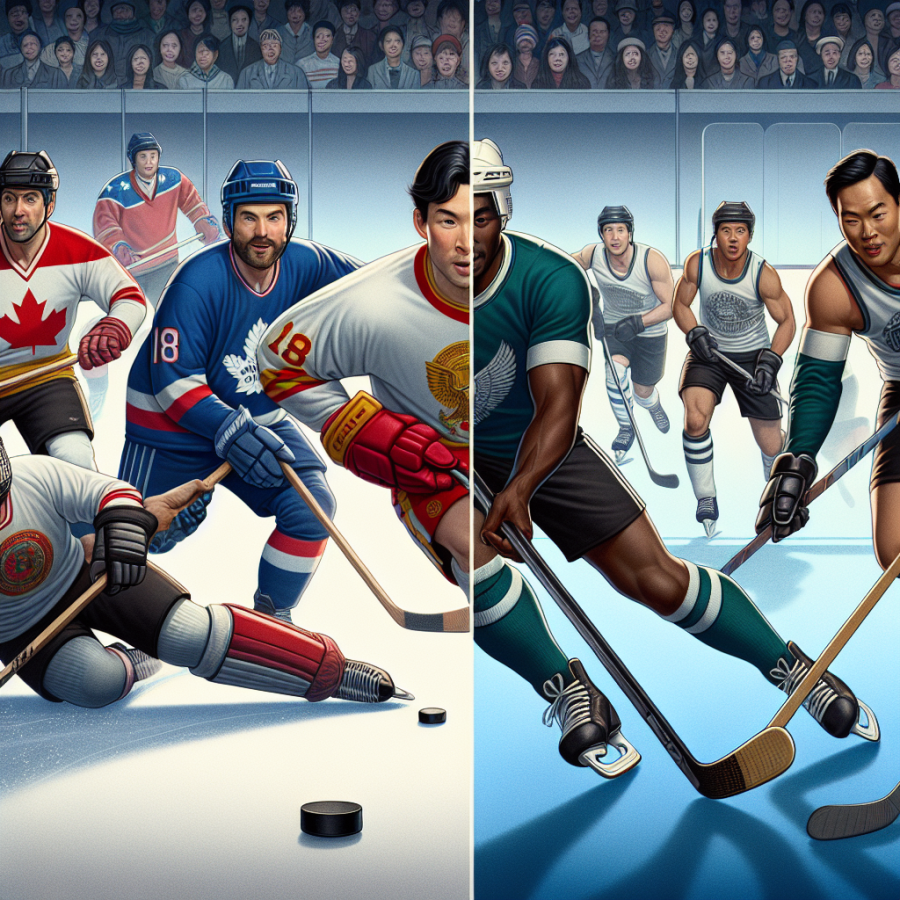Exploring the Surface Differences: A Dive into Ice and Floor Hockey Dynamics
Diving into the dynamics of ice and floor hockey reveals significant surface differences that directly influence the gameplay of these two popular variations of hockey. Despite both games sharing a common goal of maneuvering a puck or ball into the opponent's net, the surfaces on which they're played—ice and a solid floor—necessitate different tactics, equipment, and physical demands.
When exploring puck play on ice, the slick nature of the surface stands out. Ice hockey players glide on skates, and the frictionless environment allows for high speeds and seamless directional changes. The puck, made of hard vulcanized rubber, glides effortlessly across the ice, making it conducive to long, smooth passes and powerful shots. The speed of the game on ice is rapid, with the puck potentially reaching speeds of over 100 miles per hour in professional slap shots. This high-velocity environment demands quick reflexes and agility from the players, with the game characterized by bursts of intense skating and rapid puck movement.
The skill set for effective puck control on ice includes the ability to perform quick stops and starts on skates, execute sharp turns, and maintain balance during collisions—all while managing stickhandling at high speeds. Ice hockey sticks are slightly longer with a more rigid construction, which allows players to exert more force on the puck, resulting in harder shots.
On the other hand, floor hockey, played on surfaces like wood, asphalt, or specialized sport tiles, presents a starkly different playing experience. The lack of gliding means that players run on foot, requiring different muscle groups and stamina compared to skating. The ball or puck used in floor hockey—often a lighter plastic or felt version—does not move as swiftly as an ice hockey puck. Floor surfaces create more friction, which reduces the speed and distance of passes and shots and generally slows down the pace of the game. Players have to be adept at dribbling and controlling the ball or puck in tighter spaces, with quick footwork and precise handling taking precedence over the brute force often showcased in ice hockey.
Puck play on solid ground is characterized by shorter passes and a greater emphasis on ball or puck possession and control to navigate around opponents. Floor hockey sticks are typically shorter for better maneuverability and made of lighter materials suitable for a less abrasive surface and the different dynamics of the ball or puck.
The different physical demands of skating versus running play into the strategy of each game.
Read also:
Exploring the Abundance of Golf Courses in Palm Springs
Gear and Gameplay: Dissecting the Nuances of Ice Hockey and Floor Hockey Equipment and Rules
Gear and Gameplay: Dissecting the Nuances of Ice Hockey and Floor Hockey Equipment and Rules
When diving into the world of puck play, the distinctions between ice hockey and floor hockey are most apparent in the equipment used and the rules that govern each sport. The specific gear required for ice hockey and floor hockey reflects the environments in which they are played and influences the way the games are played.
In ice hockey, players don layers of protective equipment due to the fast-paced and physical nature of the sport. This includes a helmet with a face cage or shield, shoulder pads, elbow pads, gloves, padded shorts (also known as hockey pants), shin guards, and skates designed for gliding across the ice. The stick used in ice hockey is typically made of composite materials for lightweight durability and features a curved blade for handling the rubber puck.
Ice hockey rules incorporate offside and icing, which affect the flow of the game and team strategies. The presence of a blue line and red line on the ice surface helps players understand their positional limitations. Physical contact is a regulated aspect of the game, with body checking allowed under certain conditions. Penalties for infractions can lead to power plays, significantly influencing the outcome of the game.
Conversely, floor hockey, often played in gymnasiums or on outdoor surfaces, requires far less protective gear. While helmets and gloves may still be used, the body protection seen in ice hockey is typically unnecessary because physical contact is usually minimized or prohibited. Instead of skates, players wear sneakers or indoor sports shoes that provide traction and agility on the smooth floor surface. The sticks tend to be lighter, with plastic blades, and are designed to handle a lighter ball or puck that glides across the floor.
Floor hockey rules are tailored to ensure player safety and accommodate the different playing surface. There is no offside rule or icing in floor hockey, which allows for a continuous flow of play. Physical contact, such as checking, is generally not permitted, making the game less aggressive and more inclusive for participants of various skill levels.
Both ice and floor hockey have goalies equipped with specific gear to protect them from high-speed shots. Ice hockey goalies wear extensive padding, including leg pads, a blocker, a catching glove, chest protector, and a reinforced helmet to withstand the impact of the dense rubber puck. In floor hockey, the goalie gear is less bulky, with simpler forms of protection since the ball or a lighter puck is used.




